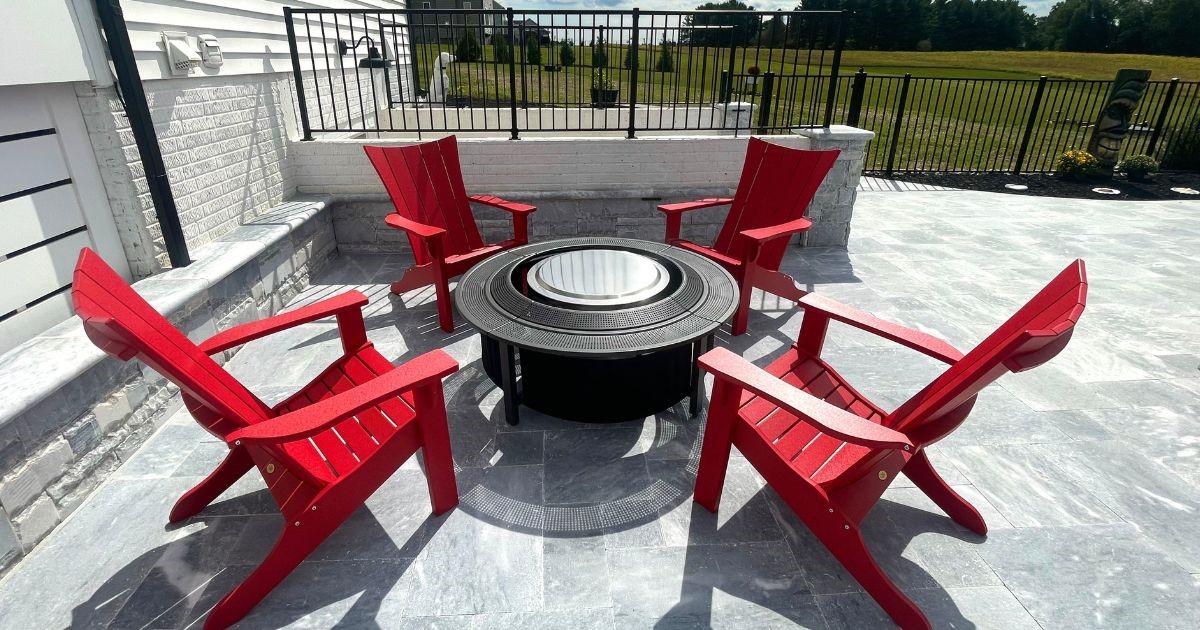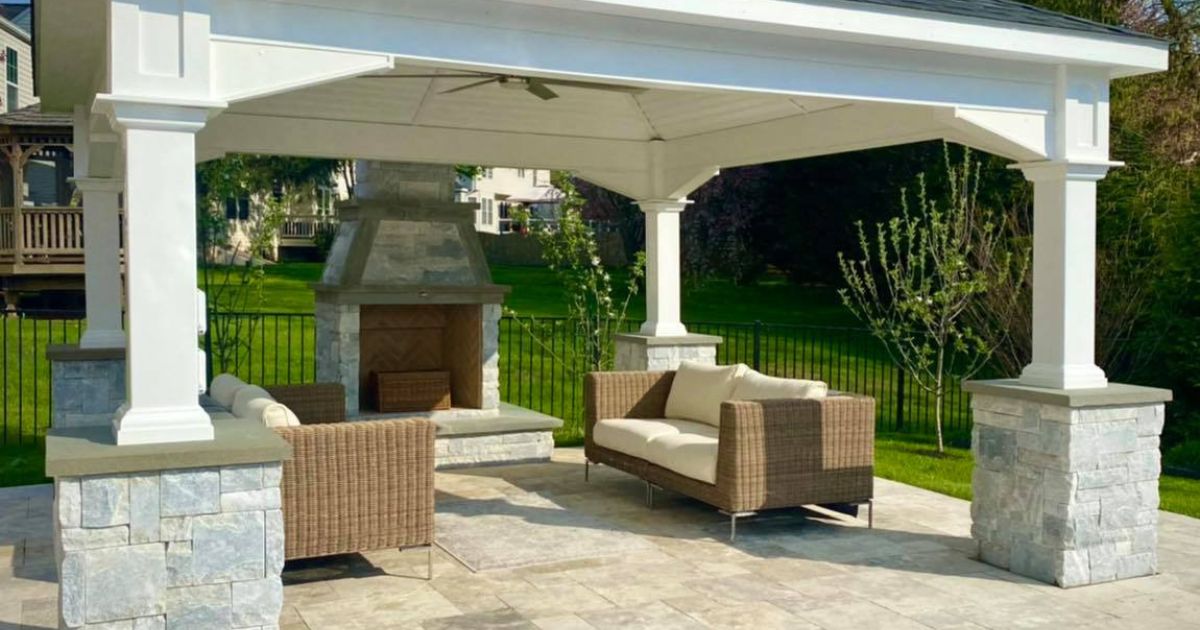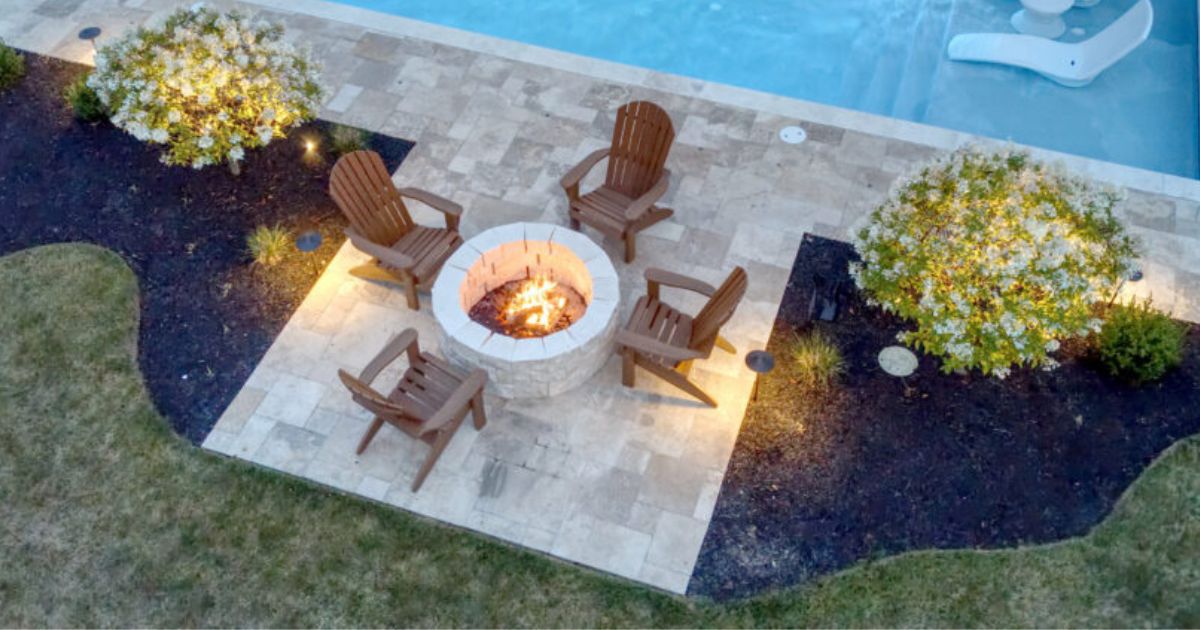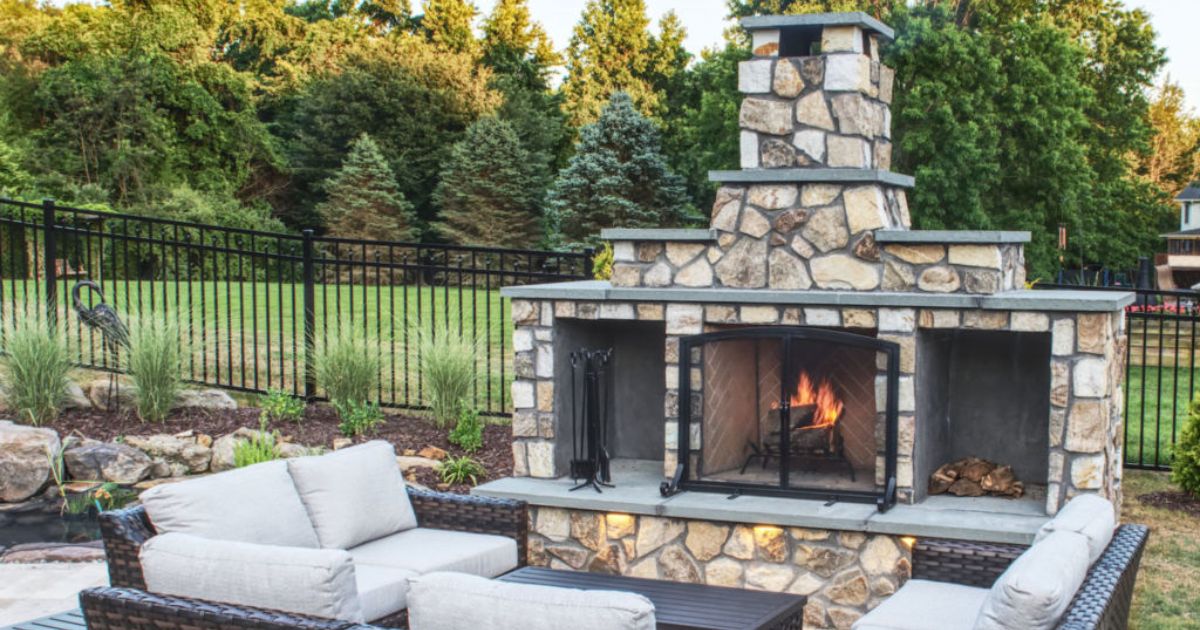Outdoor fireplaces are becoming more and more popular for upscale homes across the United States.…

Are Gas or Wood Fire Pits Right for You?
Fire pits add a nice gathering spot to your outdoor living space, and a built-in fire pit elevates the space further. When it comes to installing a built-in fire pit, one of the biggest choices you’ll need to make is what fuel to burn. Gas or wood – which one is right for you?
To help you make your decision, we’ve put together some of the pros and cons of a gas fire pit vs. a wood fire pit.
Wood Fire Pit
Wood-burning fire pits are the traditional choice. Let’s take a look at some of the advantages and disadvantages of a wood fire pit.
Advantages of a Wood Fire Pit
- A wood-burning fire pit is definitely for you if you love the smell of a wood fire and you like the crackling sound as well.
- Lower Cost. In general, a wood fire pit will have a lower lifetime cost. Firewood is relatively cheap and can sometimes be found in your own yard if you cut a tree down. It will also generally cost less to install than a gas fire pit.
- More Warmth. A wood-burning fire is generally warmer than a gas fire, and the heat from the flames spreads out further.
Disadvantages of a Wood Fire Pit
- Harder to Light. You need to have a certain level of fire-building skills for a wood fire pit to work for you. You also have to work to keep it burning properly.
- Smoke, Ash, and Embers. A wood fire will generate smoke, ash, and embers. If the wind blows the wrong way, you and your guests might get a face full of smoke. And popping embers can easily start a fire if the fire pit is anywhere near anything flammable.
- You Need a Space to Store Wood. If you want to easily use your fire pit at a moment’s notice, you need to have the wood and kindling on hand. This means you have to dedicate an area of your patio to wood storage.
- You’ll need to clean out the ash and bits of unburned wood every once in a while. You also don’t need to carry or chop wood.
Now let’s take a look at the advantages and disadvantages of a gas fire pit. And by gas, we mean either a propane tank or a fire pit that is hooked up to a natural gas line.
Advantages of a Gas Fire Pit
- Easy to Operate. A gas-burning fire pit is easy to use for anyone. Simply push a button or turn a knob to ignite the fire. No fire-building skills are necessary.
- Smokeless, Clean Burn. You never have to worry about smoke, ash, or embers with a gas fire. The safety of no embers makes gas fire pits the go-to choice for many HOAs.
- Low Maintenance. If your fire pit is connected to a natural gas line, you have little to no maintenance. If you use a propane tank, you’ll have to switch it out periodically.
Disadvantages of a Gas Fire Pit
- Higher Cost. The biggest drawback for most people is the higher cost, both for installation and for fuel going forward. Installation costs more because it is more complex, especially if you are connecting a fire pit table to a natural gas line.
- Longer Installation Time. Along with the higher cost, the associated complexity with installation can mean a gas fire pit takes longer to install than a wood fire pit. It will depend on who you hire to do the job and what the gas source is.
Whichever fuel source you choose, you’re sure to enjoy your built-in fire pit for years to come.
Make It Exceptional. Make It Woodfield.
If you’re looking to upgrade your outdoor living area with a built-in fire pit, make sure you hire experienced hardscape contractors with design and build expertise. Often, a fire pit is installed as part of a larger patio project. You deserve an exceptional experience from the first consultation to the pool and patio installation all the way through to decades of pool parties.
We design and install custom hardscaping projects for homeowners throughout the Baltimore area, including Anne Arundel County, Baltimore City, Baltimore County, Carroll County, Cecil County, Harford County, and Howard County. Schedule a call today.




